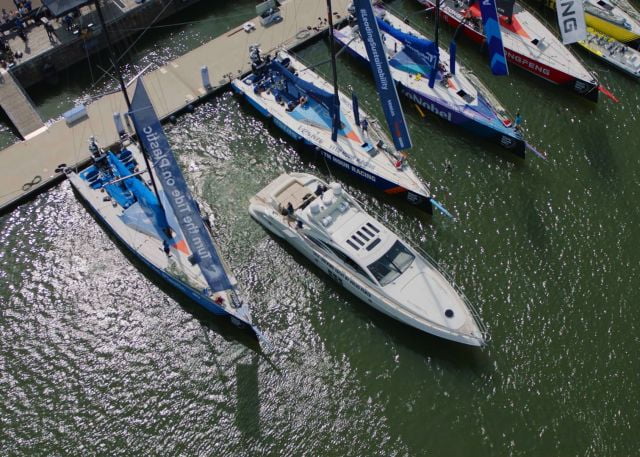Volvo Penta has unveiled a new self-docking solution to help vessels manoeuvre into tight spaces, set to launch in 2020.
The technology was demonstrated at the Gothenburg, Sweden, stopover of the Volvo Ocean Race, where boaters were given a live demonstration of how a 68ft yacht fitted with the technology maneuvered itself into a tight space between two VOR65 racing yachts.
“Its sensors and onboard computers react in milliseconds to changing wind and sea conditions, constantly making micro adjustments in power and steering angle of the IPS drive to keep the boat on its intended course into a safe berth,” said Björn Ingemanson, Volvo Penta president.
“If necessary, the docking process can be paused and the system will hold the boat stationary in the water.”
EVC
The automated docking capability is due to the onboard electronic vessel control system (EVC), which computes steering and drive calculations in relation to the boat’s actual position and four sensors sited on the intended berth.
As the boat nears its berth, the system recognises that it has entered a ‘catch zone’ and sends out a signal that it is ready to dock. Once the self-docking function has been activated, the boat is (aided by GPS) automatically moved into a ‘docking ready’ position. In the final stage, the system uses a combination of GPS and sensors, both those fitted onboard and additional sensors fitted to the destination dock to automatically move the boat into a safe berth.
Prototypes of Volvo Penta’s self-docking technology are currently undergoing development trials.

